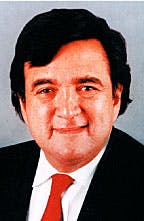The U.S. Department of Energy has offered to let U.S. oil companies store crude in the government's Strategic Petroleum Reserve (SPR).
That program was one of five that DOE announced last week to help U.S. producers survive the oil price slump.
DOE also is reopening its reservoir-class studies, offering grants to help small operators solve technological problems, demonstrating energy-saving oil field equipment, and launching an electronic-filing pilot project.
SPR storage
Energy Sec. Bill Richardson said DOE would let U.S. producers store up to 70 million bbl of oil in the SPR.He recently announced that the government would add 28 million bbl of federal royalty oil to the reserve (see related story, this page).
The latest program would let companies store oil for at least 1 year at the Big Hill SPR site south of Beaumont, Tex. DOE would charge storage fees in the form of oil.
Participating companies have until Mar. 10 to propose the volume of capacity they want to lease, the storage period, the number of times they anticipate withdrawing all or part of the oil, and the fee they are willing to pay.
DOE said it could issue contracts in late March or early April, and deliveries could begin at any time after that.
The Big Hill site, newest of the SPR caverns, is accessible via two terminals at Nederland, Tex., or a 20-in. pipeline.
Reservoir study
DOE will reopen its Reservoir Class Revisit Program, an effort begun in 1992 to encourage producers to adopt techniques for prolonging the life of aging oil fields.DOE will fund part of 10-20 projects for a total of $18 million. Proposals are due May 20 from producers operating in three major geologic classes of oil reservoirs that represent about half of the unrecovered oil in the U.S.
DOE said the three classes-fluvial-dominated deltaic reservoirs (Class I), shallow-shelf carbonate reservoirs (Class II), and slope and basin clastic reservoirs (Class III)-contain large amounts of unproduced oil that are threatened with abandonment in the low-price environment.
Earlier projects let producers apply new or untried technologies, including the first application of 4D seismic modeling, other advanced imaging techniques, the expanded use of horizontal drilling, and innovative methods to enhance the flow of crude.
Small operators
DOE launched Technology Development with Independents, a program to help independents with production problems that might be overcome by applying innovative field technologies.Eligible operators must have less than 50 employees. DOE said that, generally, financial aid will be $75,000 or less per project and must be matched by the producer.
Total funding for the program is $1 million. Projects will last from 6 months to 2 years. Operators can apply for funding by completing a simplified, six-page form.
The program will focus on specific production problems that independents face in every aspect of oil field production, from reservoir studies to managing production and environmental compliance.
DOE will accept proposals on four closing dates: Mar. 31, May 31, Aug. 30, and Nov. 30.
Electricity costs
DOE is joining with the National Association of State Energy Officials (Naseo) to sponsor a workshop and field demonstrations of energy-saving oil field equipment.The 18-month effort would try to get electric utilities to help fund energy-efficient oil production equipment, through energy efficiency rebates and other financing programs similar to those available to homeowners.
DOE said that a pilot project in a Kansas field outfitted five wells with energy-saving motors and other equipment and reduced electricity use 12%. The savings enabled the operator to recover the costs of the equipment in just over 6 months.
The Mar. 11-12 workshop in Irvine, Calif., will have producers, service companies, utilities, and others convening to discuss the pilot program and to help select field test sites.
At the test sites, an array of energy-efficient pumps, motors, and other equipment will be tested under operating conditions.
Naseo will compile the results and use them to encourage utilities to help finance the energy-saving equipment. Also participating are Independent Petroleum Association of America, Interstate Oil and Gas Compact Commission, Petroleum Technology Transfer Council, National Rural Electric Cooperative Association, and several regional and local electric utilities.
DOE is providing $170,000 in funding, which will be supplemented by contributions from state energy offices, Naseo, and local utilities.
Electronic filing
DOE will help fund a Texas pilot program to replace paper regulatory filings with an online digital processing system.Under the plan, the producer would submit electronic permit applications via the Internet, along with graphic or text attachments. The operator's identity would be authenticated online, and permit fees would be handled via secure credit card transactions.
DOE said the producer would be notified electronically within hours whether the permit application had been approved.
It said the savings might only be $200-400 for a typical drilling permit. But it said that, in Texas alone, operators filed nearly 150,000 permit applications with the Texas Railroad Commission in 1997-about 15,000 of them for drilling permits, so Texas producers could save $3-6 million/year.
DOE said that expanding electronic filings to other states could save producers "hundreds of millions of dollars."
DOE and TRC will each spend $700,000 for a 2-year development and testing effort. TRC will complete a prototype system within 8 months and have it online and functional by late 2001.
Although the program will focus on drilling permits, DOE said it could be expanded to include TRC's entire regulatory and compliance process. TRC has the goal of a paperless data system by 2005.
Bill Richardson Energy Sec.
"We are taking advantage of today's low oil prices to rebuild our strategic oil reserves."
Copyright 1999 Oil & Gas Journal. All Rights Reserved.



